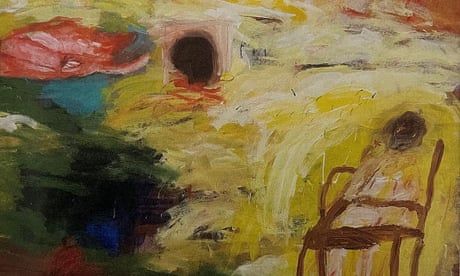
A dazzling exhibition of Pakistan’s art and architecture – some of it never before loaned outside the country – shows how the repressive 11-year regime of Zia-ul-Haq triggered an extraordinary resistance
The 11-year religious dictatorship of General Zia-ul-Haq profoundly shaped the art of Pakistan. After the general’s successful coup in 1977, his regime ushered in martial law, trampled on women’s rights, enforced strict censorship and placed draconian restrictions on artistic expression.
Ascent of Man, an abstract painting by Quddus Mirza, is inspired by the controversial trial and hanging of Zulfikar Ali Bhutto, the democratically elected prime minister overthrown by the coup. The painting, part of a groundbreaking exhibition of Pakistan’s art and architecture, depicts a man sitting in a chair while a headless body floats in the sky. It blends elements of magic realism with an allusion to the seventh-century martyrdom of Husayn ibn Ali, a grandson of the prophet Muhammad whose death was a major episode in Islam’s history that still resonates today.
Continue reading...